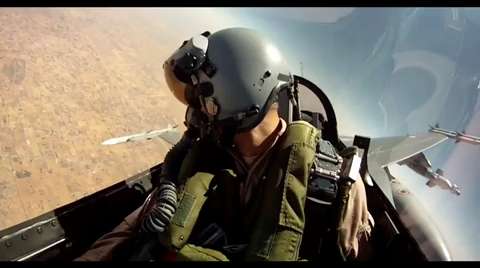Difference between revisions of "Situational awareness"
(→BRAA) |
|||
| (2 intermediate revisions by the same user not shown) | |||
| Line 1: | Line 1: | ||
| + | [[File:sa.jpg||none|500px|left|]]<br /> | ||
=Learning objectives= | =Learning objectives= | ||
#Know where your wingman is | #Know where your wingman is | ||
| Line 8: | Line 9: | ||
=Learning files= | =Learning files= | ||
* [http://forums.unitedoperations.net/index.php?app=core&module=attach§ion=attach&attach_id=260 flight briefing template] | * [http://forums.unitedoperations.net/index.php?app=core&module=attach§ion=attach&attach_id=260 flight briefing template] | ||
| + | |||
| + | =Orientation= | ||
| + | When flying, it’s important to be able to communicate where you are or where something else is, either in relation to yourself or as an absolute position. There are three common systems of referencing a position. These are '''BRAA''', '''[[bullseye]]''' position, and '''clock''' direction. | ||
| + | |||
| + | ==Clock direction== | ||
| + | The simplest and quickest, but least accurate method. Imagine the plane sitting on a clock face with the nose pointing towards 12 o’clock and the tail towards 6 o’clock. Now you can reference a bearing by giving the approximate clock direction relative to your nose. | ||
| + | |||
| + | For example, 1 o’clock is just to the right of your nose, 9 o’clock is directly to your left, etc. Enemy planes are, famously, on your 6 o'clock. | ||
| + | |||
| + | When calling out a direction, preface the number by saying “left” or “right”. For example {{green|“Tally bandit, '''right three o’clock!'''”}}. Doing this makes it quicker for listeners to comprehend where the target is, and inserts a measure of error checking. If you say “Right 10 o’clock” by accident, it’s easy for listeners to understand you meant 2 o’clock. Clock directions are most useful for giving directions to things within visual range. | ||
| + | |||
| + | ==BRAA== | ||
| + | BRAA stands for '''Bearing''', '''Range''', '''Altitude''', and '''Attitude'''. It is the easiest method to communicate the position of a contact on your radar to your flight members. | ||
| + | |||
| + | To give a BRAA position you’ll simply read off the direction you see the target in, its range and altitude (from the radar), and what direction it’s going. | ||
| + | |||
| + | Example BRAA bandit call: {{green|“Bandit, 030, 35 miles, angels 15, hot!”}}. In this situation there’s a hostile aircraft at bearing 030 degrees 35 nmi away that’s flying at 15000 feet coming towards you. | ||
{{Nav UOAF}} | {{Nav UOAF}} | ||
Latest revision as of 14:50, 27 March 2017
Learning objectives
- Know where your wingman is
- Know where likely air threats are coming from
- Know where likely ground threats are
- Have a plan for safely exiting the air
- Key sensors for maintaining situational awareness (eyes, FCR, HSD, RWR, datalink)
Learning files
Orientation
When flying, it’s important to be able to communicate where you are or where something else is, either in relation to yourself or as an absolute position. There are three common systems of referencing a position. These are BRAA, bullseye position, and clock direction.
Clock direction
The simplest and quickest, but least accurate method. Imagine the plane sitting on a clock face with the nose pointing towards 12 o’clock and the tail towards 6 o’clock. Now you can reference a bearing by giving the approximate clock direction relative to your nose.
For example, 1 o’clock is just to the right of your nose, 9 o’clock is directly to your left, etc. Enemy planes are, famously, on your 6 o'clock.
When calling out a direction, preface the number by saying “left” or “right”. For example “Tally bandit, right three o’clock!”. Doing this makes it quicker for listeners to comprehend where the target is, and inserts a measure of error checking. If you say “Right 10 o’clock” by accident, it’s easy for listeners to understand you meant 2 o’clock. Clock directions are most useful for giving directions to things within visual range.
BRAA
BRAA stands for Bearing, Range, Altitude, and Attitude. It is the easiest method to communicate the position of a contact on your radar to your flight members.
To give a BRAA position you’ll simply read off the direction you see the target in, its range and altitude (from the radar), and what direction it’s going.
Example BRAA bandit call: “Bandit, 030, 35 miles, angels 15, hot!”. In this situation there’s a hostile aircraft at bearing 030 degrees 35 nmi away that’s flying at 15000 feet coming towards you.
{{#invoke:Navbox|navbox}}
